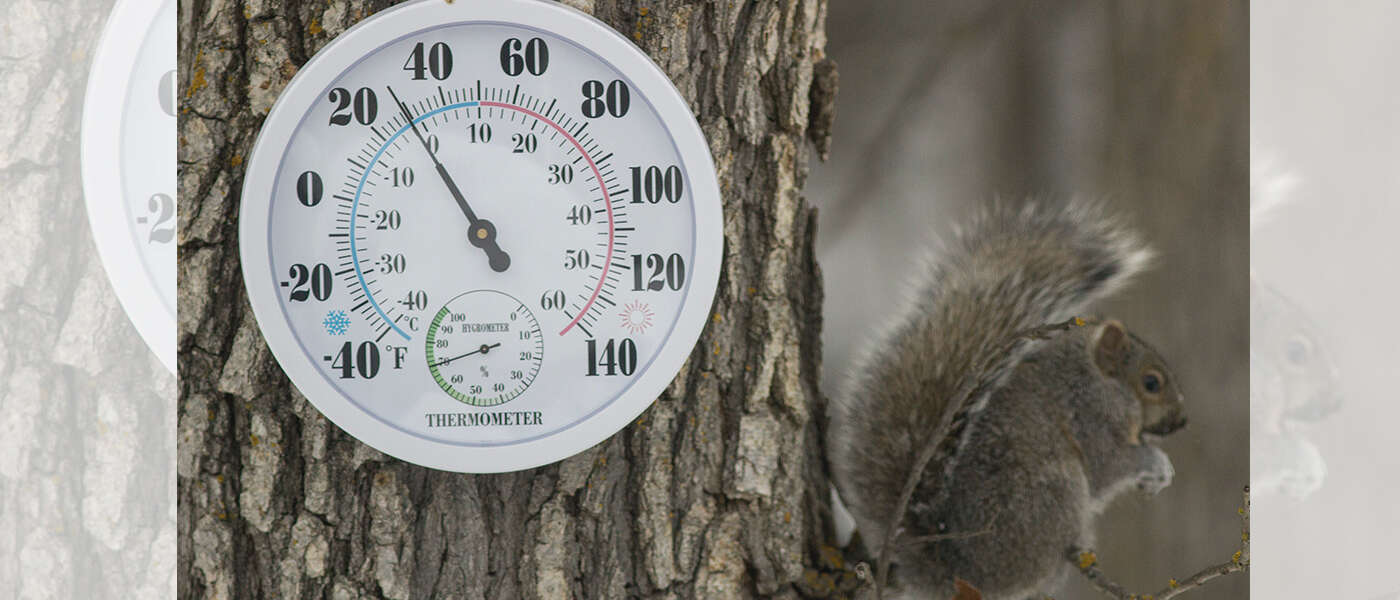
How many extremely cold or frost-free days will we see this winter? How many extremely hot days can we expect this year?
Helping everyone from farmers to urban planners predict frost-free days, heat extremes and temperatures in between is the goal of a new model developed by University of Guelph engineers.
Dr. Ramesh P. Rudra, a professor with the School of Engineering in the College of Engineering and Physical Sciences, and his team created the model that links our changing climate to the frequency of frost-free days each winter.
“The advantage of this model is that we don’t need complex calculations to get results,” said Rudra. “This is a simple model with which you can plug readily available historical data into the equation to get the results.”
The researchers describe the model in the Journal of American Society of Agricultural and Biological Engineers.
Their exceedance probability-based prediction model can also be used to estimate the number of days above a given threshold temperature in future under a changing climate. That means it has huge potential use as a decision support tool for agriculture, energy, urban planning and municipal governments.
Temperatures are rapidly increasing, bringing change with them
The researchers used probability to build the model for predicting frost-free days – the number of winter days with minimum temperatures above zero degrees Celsius. They also used temperature data from 11 weather stations in Quebec, Ontario, Manitoba and Saskatchewan.
They found the number of frost-free days will increase exponentially, even though average daily winter temperatures will rise in small increments. Also, they found that southern latitudes will experience higher rates of change in frost-free days than northern ones.
According to the model, if the mean winter daily minimum temperature increases by 2 C, the number of frost-free days in Windsor, Ont., will increase by more than 20 days, compared to an increase of roughly one day in Kuujjuarapik in northern Quebec.
Although the projected increase in daily winter minimum temperatures is small, the rising number of frost-free days is significant and comes with its own set of consequences, said Rudra.
“If we were to look at agriculture in the month of April, we could ask: ‘How many extra days can we get when the temperature is above zero degrees?’” he said. “We say May is currently the start of the growing season, but if the present rate of temperature change continues for the next 100 years, the growing season could start in the middle of April.”
Weighty implications bring hope

Conversely, the number of extremely hot days, when the summer daily maximum temperature exceeds 30 C, might rise exponentially with a relatively small increase in those daily temperatures.
Along with colleagues from McGill University and Punjab Agricultural University, the team plans to test their tool with extremely hot days in India to assess the impact of changing climate on future water availability.
“Canada has a lot of water, but in a country like India, they’re dependent on groundwater, which only gets restored during the monsoon period, and is in a state of decline,” said Rudra.
Their research could help farmers create crop and water management plans to better adapt to a changing climate, adds Jaskaran Dhiman, a post-doctoral researcher supervised by Rudra and a co-author of the published study.
“This model will have implications not only in agriculture but also with policy makers and stakeholders because they can strategize new adaptation and mitigation practices to tackle climate issues,” said Dhiman.
This research was funded by the Natural Sciences and Engineering Research Council of Canada and by U of G’s Undergraduate Student Research Awards program.
Contact:
Dr. Ramesh P. Rudra
rrudra@uoguelph.ca
Dr. Jaskaran Dhiman
dhimanj@uoguelph.ca
